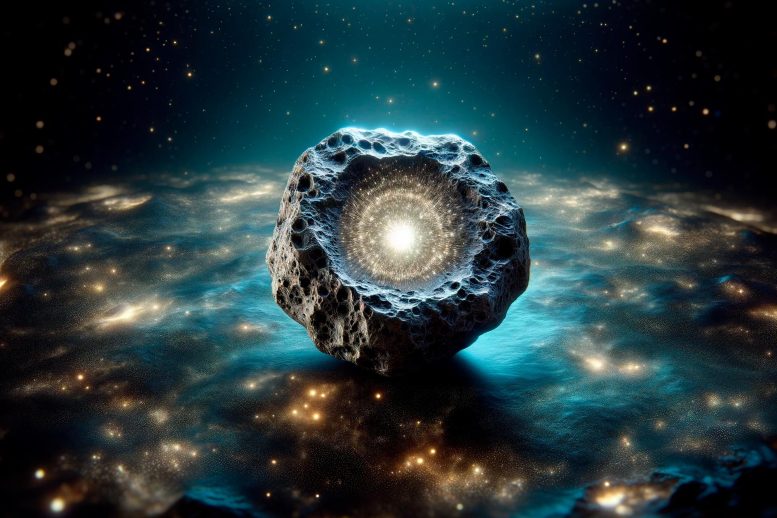
Researchers discovered a significant magnesium anomaly in a meteorite’s dust particle, challenging current astrophysical models and suggesting new insights into hydrogen-burning supernovas. (Artist’s concept.) Credit: SciTechDaily.com
In a groundbreaking discovery published in the prestigious Astrophysical Journal, scientists have identified a rare dust particle lodged within an ancient extraterrestrial meteorite, shedding new light on the origins of stars beyond our solar system.
Advanced Research Techniques
Led by Dr. Nicole Nevill of the Universities Space Research Association at LPI, during her Ph.D. studies at Curtin University, the research team meticulously analyzed the dust particle, delving into its atomic composition with unparalleled precision using atom probe tomography.
Atom probe tomography is an instrument that breaks samples down to the atomic structure and reconstructs them in 3D resulting in the exact x,y,z coordinates of each atom in the specimen. It measures all ions on the periodic table except noble gases, has sub-nm spatial resolution, and a detection limit of 10 ppm. The instrument is very new to the field and Dr. Nevill was among the first to use it for planetary sciences.
Atom probe analysis of a particle formed by a hydrogen burning supernova. This three dimensional ‘atom map’ shows two types of magnesium isotopes detected within the sample, with silicon and oxygen atoms within the particle displayed as smaller spheres. This work relies on the ability of the atom probe to count individual isotope.s of magnesium so that the isotopic ratio can be measured. Image credit: David Saxey, Geoscience Atom Probe Facility, Curtin University
Challenging Existing Models
“The results were literally off the chart as this was the highest magnesium anomaly ever discovered in a presolar silicate grain,” explains Dr. Nevill. “The results challenge current astrophysical models, indicating processes are occurring in stellar environments we do not yet fully understand.”
This extreme magnesium anomaly can currently only be explained by a recently discovered type of star — a hydrogen-burning supernova. As the first known detailed chemical study of a presolar grain from a hydrogen-burning supernova, the results unlocked new insights into hydrogen-burning supernovas and their evolutionary conditions.
New Insights into Star Formation
Furthermore, this remarkable finding marks the first time presolar silicates have been studied using atom probe tomography, the highest spatial resolution technique in geochemical and geochronological research. The atom probe has expanded the range of measurable isotopes per presolar grain volume and achieves a new level of detail essential for helping us understand how these stars form.
For more on this research, see Unprecedented Find in Meteorite Challenges Astrophysical Models.
Reference: “Atomic-scale Element and Isotopic Investigation of 25Mg-rich Stardust from an H-burning Supernova” by N. D. Nevill, P. A. Bland, D. W. Saxey, W. D. A. Rickard, P. Guagliardo, N. E. Timms, L. V. Forman, L. Daly and S. M. Reddy, 28 March 2024, The Astrophysical Journal.
DOI: 10.3847/1538-4357/ad2996
>>> Read full article>>>
Copyright for syndicated content belongs to the linked Source : SciTechDaily – https://scitechdaily.com/rare-dust-particle-from-ancient-extraterrestrial-meteorite-challenges-astrophysical-models/